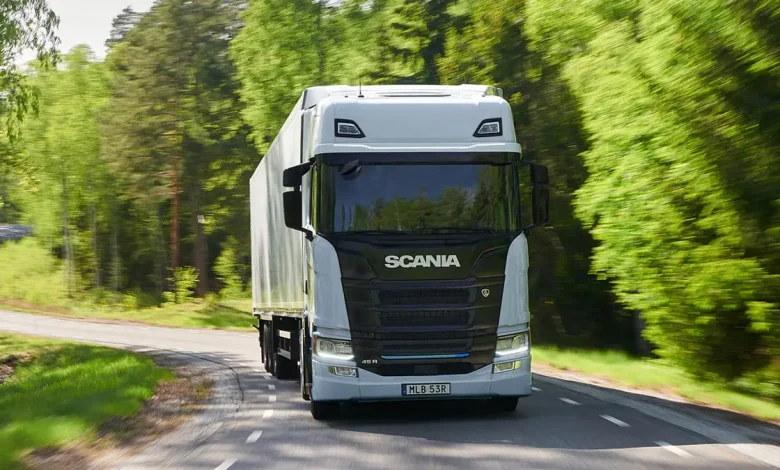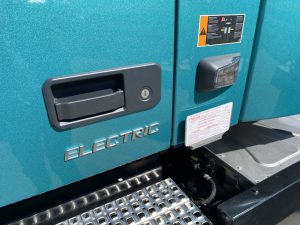Environmental regulations will shape your future trucks

A patchwork of environmental regulations in California and elsewhere in the U.S. will affect the types of trucks and powertrains Canadian fleets will have available to them in the near future. And compliance with some of those California-based regulations will bring administrative burdens to Canadian fleets that operate there.
Panelists discussing How the future regulatory environment will impact your equipment purchasing decisions, at this year’s American Trucking Associations’ Management Conference & Exhibition, could not say for sure how all the regulatory requirements in the making will play out for fleets. But Matthew Spears, global executive director – regulatory affairs with Cummins said there are two major rulemakings fleets should be watching.
The California Air Resources Board’s (CARB) omnibus rulemaking “took pretty much every element of their regulations and made them tighter and more stringent,” Spears warned. The tightening regs affect NOx, particulate matter (PM), useful life of an engine, and warranty requirements, making them all more stringent.
The California regulation was finalized in late 2021 and some other states indicated they will follow suit, most notably Oregon, which will match California’s aggressive 2024 Model Year implementation timeline. “This is definitely a California regulation other states are looking at adopting,” said Spears.
The emissions reductions are substantial: 75% of NOx, and 50% of PM emissions will have to be slashed. The 2024 Model Year timeline requires an EPA pre-exemption waiver, which has not yet been granted and could delay implementation. Court challenges could also cause delays, due to the short timeline engine makers were given to prepare.

Two different emissions standards
The second rule that will affect equipment is the EPA Clean Trucks Plan, scheduled for implementation on Model Year 2027 equipment. The rulemaking is expected to be finalized by the end of this year, and could call for a 75% reduction in NOx, as well as slashed PM and hydrocarbons, and introduce more stringent longer useful life requirements and warranties.
The end result could be two different emissions standards within the U.S. “It could become very complex,” Spears warned.
By 2027, fleets can expect to see new hardware and aftertreatment systems on diesel engines. Cylinder deactivation and a dual-stage selective catalytic reduction (SCR) system are a couple options being considered. The good news for fleets is that fuel economy will improve, and warranty coverage will be extended, as the regulators want to see longer-lasting engines with manufacturers responsible for the ongoing functioning of the emissions-slashing systems.
Ramped-up SCR levels will, however, consume more diesel exhaust fluid (DEF). Aside from that, Spears said the end users will be able to operate the new engines as they do existing engines today.
“We are ultimately responsible for certification and compliance as the engine manufacturer,” he said.
Truck makers, too, will have a role to play in reducing emissions. Johan Agebrand, director product marketing with Volvo Trucks North America, said GHG Phase 2 and 3 standards will require some mix of things like chassis fairings, ground effects, lower rolling resistance tires, automated transmissions, and faster rear axle ratios.
Fleet reaction
Fleets that send trucks to California will have to comply with that state’s emissions requirements, regardless of where they’re domiciled. Ron Hall, senior vice-president of equipment and fuel with C.R. England said this requires reporting to CARB any California travel within 30 days.
The fleet currently has 1.5 people who spend all their time working on California compliance.
“We just had to put headcount to it,” said Hall. “It’s not inexpensive headcount. These are not clerks, they’re analysts.”
Hall says the methods of enforcement – audits rather than roadside enforcement – also place more pressure on larger fleets.
“In our opinion, CARB’s compliance strategy tends to avoid roadside inspections, favoring post-activity audits. This creates, in our opinion, an unfair playing field. Large fleets are much easier to audit than small fleets,” Hall said. “It’s probably too much to say [small fleets] can operate with impunity but they’re not held to the same standards from a reporting standpoint.”
Hall also said fleets won’t easily be able to parse out their California activity as a separate entity, according to his interpretation of the rules covering “shared ownership” or “investment involvement” of parent companies.
Integrating electric trucks in time to meet impending environmental requirements in California will also be challenging. Hall said fleets need to plan ahead for limited build slots and to build charging infrastructure.
That opinion was shared by Dan Porterfield, senior vice-president of maintenance and equipment control with Covenant.
“You need to start planning ahead,” he said. “This is coming at us fast. On the equipment side you need to be thinking now, how are you going to comply?”
Covenant has found electric trucks cost 2.5 to three times as much as diesels, with no clue as to what resale value will be. Hall said C.R. England will likely own electric trucks from cradle-to-grave due to uncertainty over residual values.
Some fleet facilities don’t have sufficient power available to support required charging infrastructure.
Hall said C.R. England runs its California diesel-powered day cabs two shifts a day. “I don’t yet know if I can run two shifts on zero-emissions vehicles because of the charge time or my ability to fund or fit the number of charge stations I’d need to run them,” he said.
On the brighter side, Porterfield added of electric trucks, “The drivers love them. It’s such a better environment for them. Torque is no longer an issue.”
And customers are also supportive of the transition to zero-emissions vehicles. “They like the idea of it,” he said. “Some are willing to invest money.”
As new environmental regulations draw closer, Agebrand emphasized the need for fleets to work more closely with their dealers and OEMs to understand the implications
